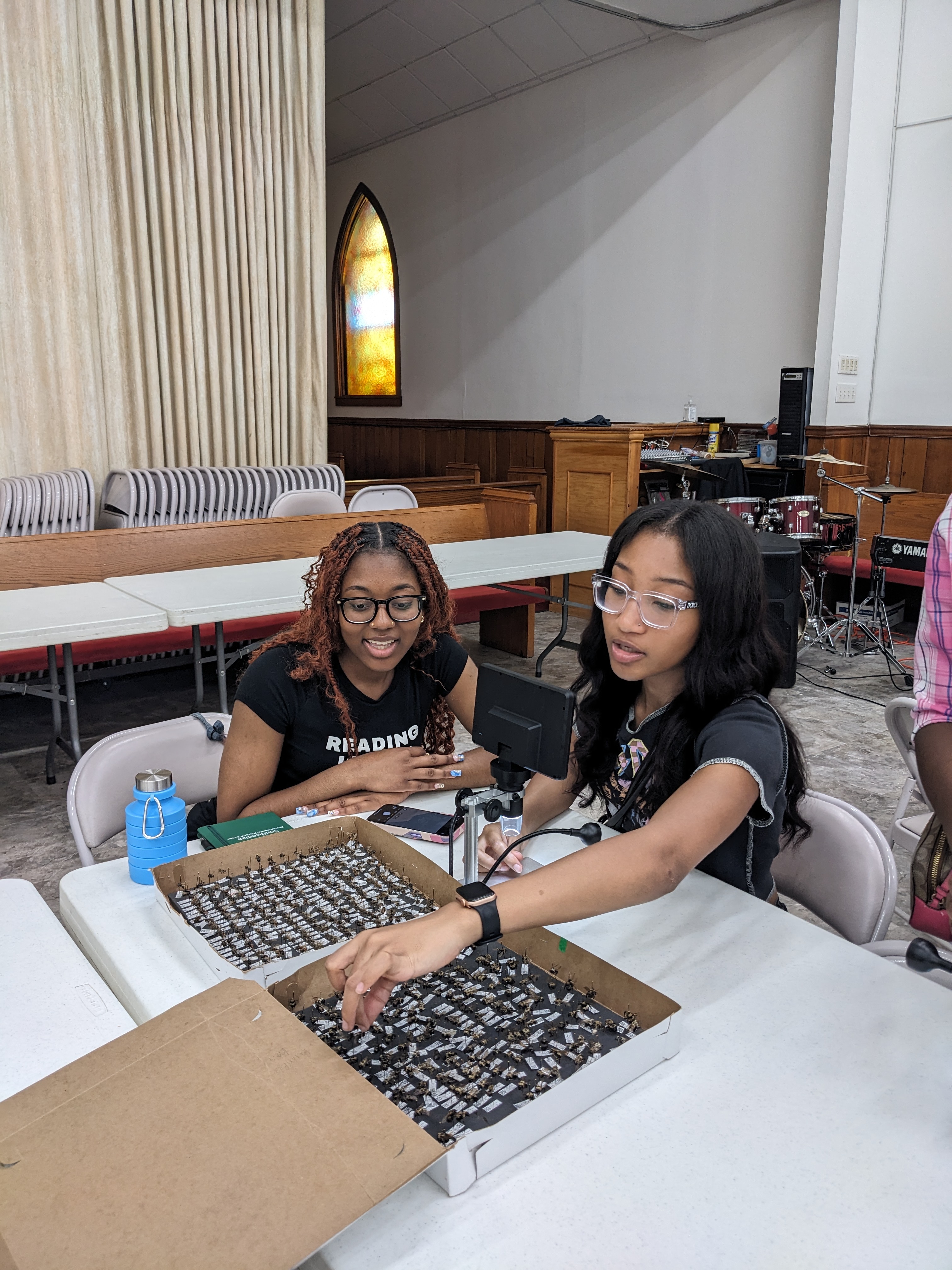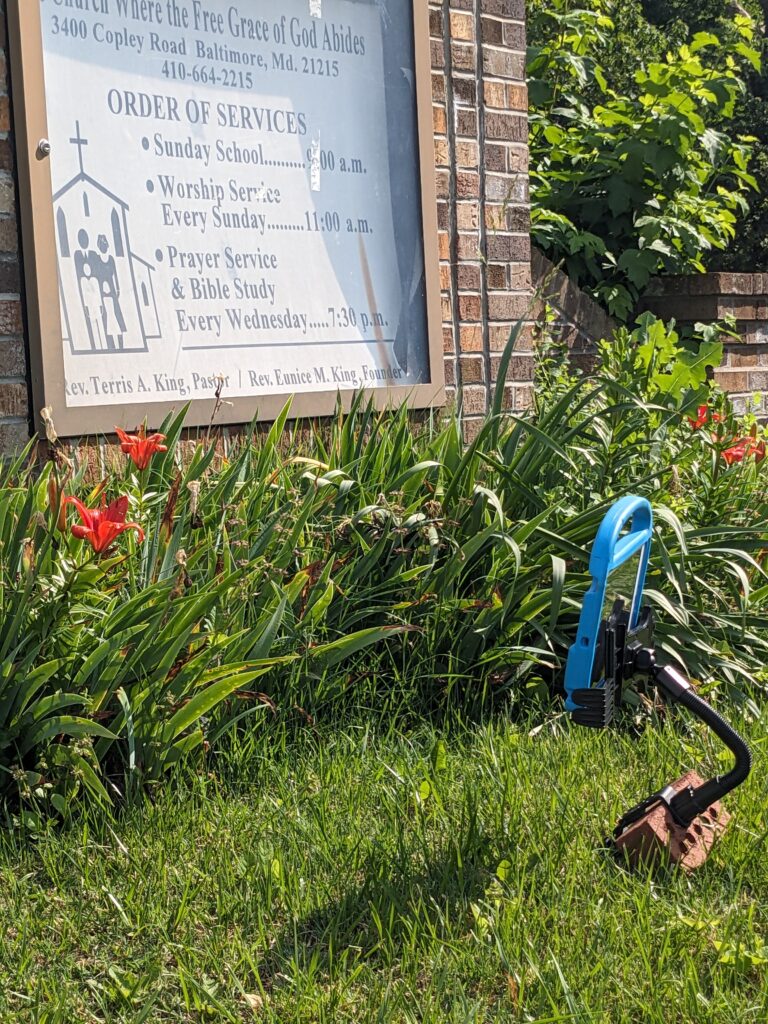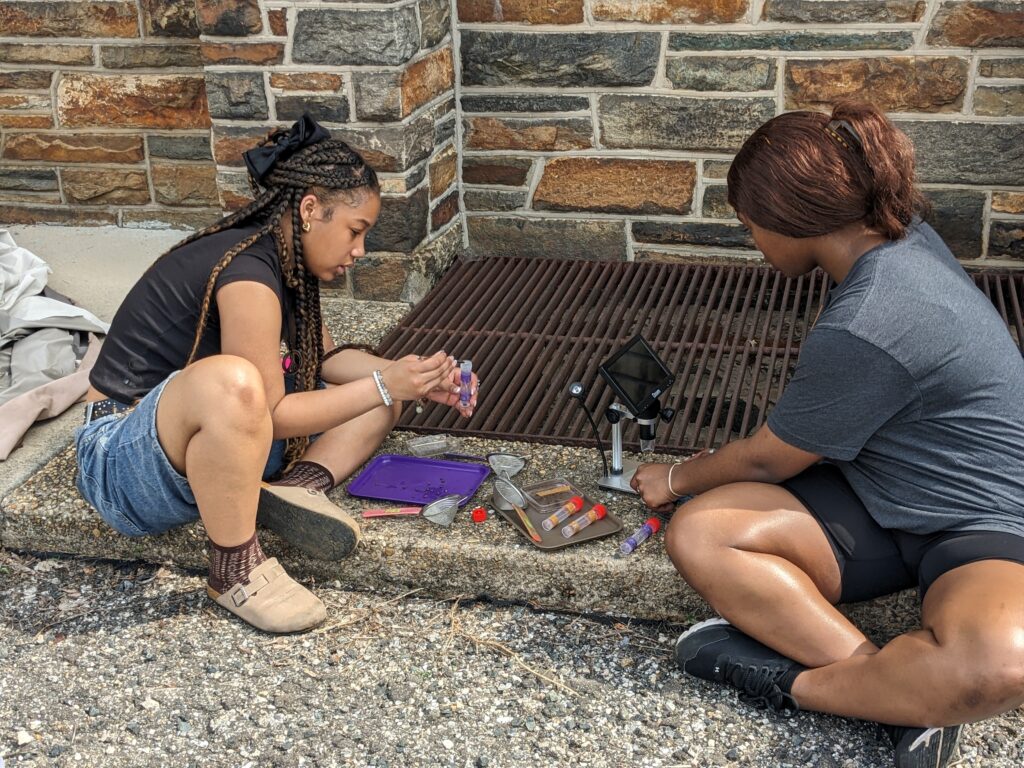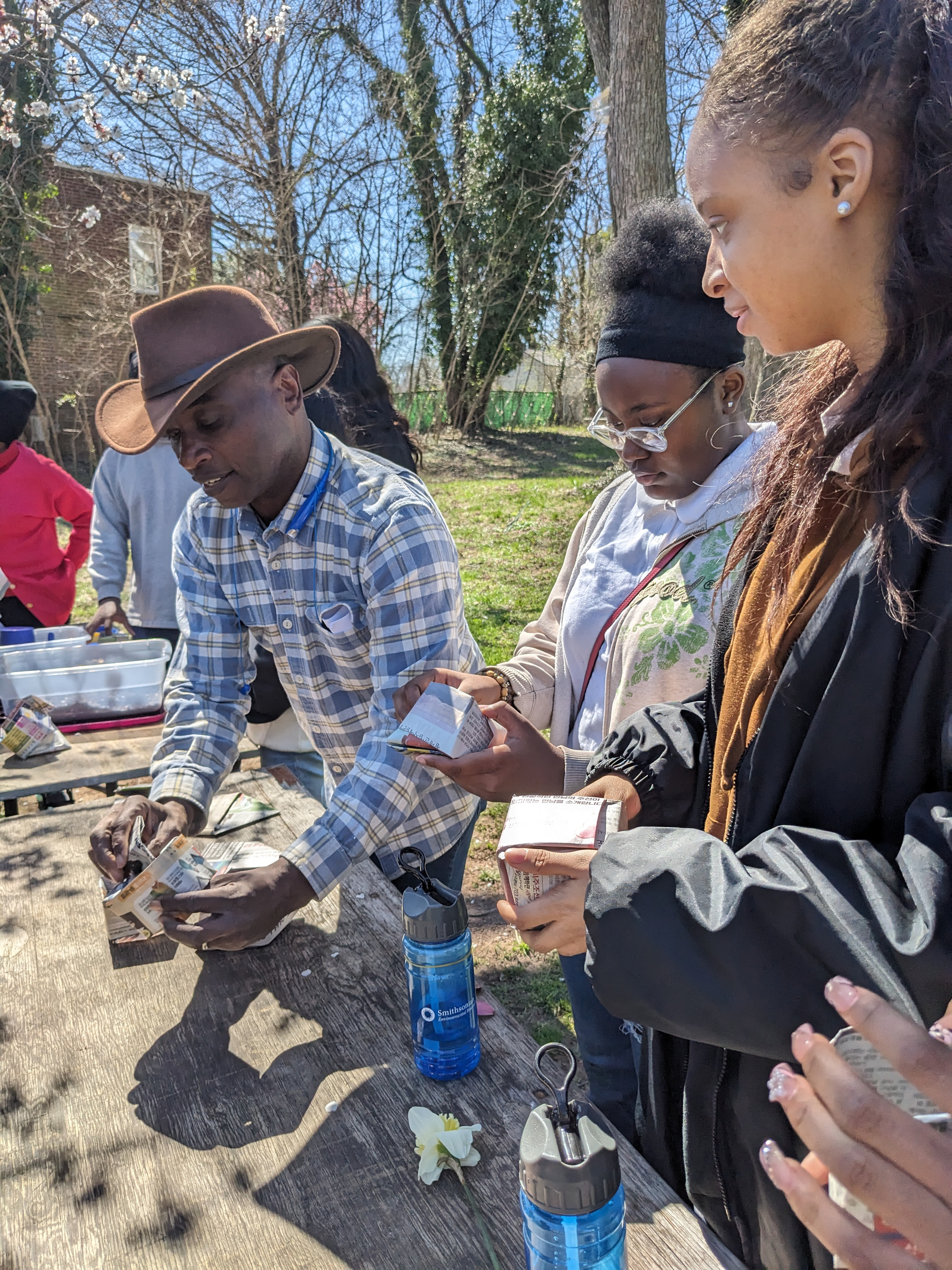by Kristen Goodhue

As a young student drawn to the intuitive side of things, Denim Fisher never felt completely at home in the science world. But she always had a deep love for nature, as a place to center and ground herself. That love, she acknowledged, comes mixed with trauma.
“The act of engaging with nature can be a daunting, frightening experience for most Black people,“ she said. “This fear response stems from historical racism and the awful things that we endured in these forests.”
Fisher was a graduating senior this year at Pikesville High School in Baltimore. Last winter and spring, she joined a high school internship program run on Saturdays by the Smithsonian Environmental Research Center (SERC) and Temple X. One particular Saturday stands out, walking through Gwynns Falls Park with her mentor, Alfie Chambers.
“We saw a poplar tree,” Fisher said. “Alfie taught me that Black bodies were lynched on this tree. This tree has gigantic branches, and mobs intentionally used these trees because of the increased likelihood of someone’s death.”
For Fisher, the internship offered a chance to explore new ways to reconnect her community with nature, and to create spaces for healing.
Science and Faith Collide

SERC and Temple X ran two six-week internships in Baltimore this year, called the “Smithsonian Baltimore Forest Science Internship.” They’re part of the new Science and Faith initiative, exploring how scientists and faith communities can work together.
In 21st-century America, it’s common to shoehorn religion and science into opposing camps. Both groups value truth, but their methods of finding it are different. However, this stereotype ignores the vast overlap in their core missions. Many faiths see environmental stewardship as a moral duty. Local religious groups also often have their fingers on the pulses of their communities.
“We’ve got faith leaders who often see their jobs as understanding their community and knowing what it needs,” said Rylee Wernoch, SERC’s Science & Faith program manager. Many take on a more active role, advocating for better housing, food security or environmental health. “[This] is a really nice complement to scientists, who are interested in providing empirical evidence for some of these challenges.”
Temple X—a school system in Baltimore that focuses on outdoor education at faith-based organizations—was a natural partner for the high school internship.
A total of 20 students joined the program, and they all had different reasons. Some wanted to explore how their local environments were affecting people’s health. Others wanted to be lawyers or fashion designers. Some were simply looking for a paid opportunity, and the outdoor environment aspect piqued their curiosity.
That variety was part of the point, according to Wernoch. The program wasn’t trying to recruit only future scientists.
“We’re hoping that we get kids who are excited about learning and curious about the scientific process,” Wernoch said. “But we think it’s really important that you have teachers and beauticians and lawyers and all different sorts of people who understand what science is and how it’s done and how we think about the natural world.”
Disciples of Nature and Society

Every Saturday the interns gathered in a Baltimore church. The first intern cohort, in February and March, focused on environmental justice. They visited parks, urban farms, the Public Works Museum and the inner harbor’s famous Mr. Trash Wheel that have shaped Baltimore culture. The second cohort in April through June did environmental research at the churches’ green spaces. Some students, like Fisher, participated in both cohorts.
Not everything went according to plan.
“Of our twelve weeks in the spring, it rained for six,” Wernoch said. “So that was pretty challenging, I think, for morale and logistics.”

The students collected data from two local Baptist churches: Liberty Grace Church of God and Sweet Hope Free Will Baptist Church. When deciding what environmental data students would collect, Wernoch tried to keep the focus on things that mattered to the community. “Wet bulb globe temperature”—a measure of how hot it feels, not just how hot a regular thermometer says it is—can help answer some of the most pressing questions.
“How many trees do we need to plant to cool our neighborhood?” Wernoch asked. “How much work do we need to do so that way our people around us feel a difference? And there’s not a clear number for that right now.”
Fisher said she feels more confident now in her ability to do science. But the barriers have deep roots in American society writ large.
“When I thought about STEM, I envisioned Whiteness, lab coats, et cetera,” said Fisher. “As a society, we need to examine why that is. Why don’t our Black children feel accepted or inclined to study STEM concepts? Who are we centering? Who are we overlooking?”
At the end of each internship, the students presented proposals for environmental projects that could improve their communities. The ideas were myriad: eco-friendly cosmetics; trash cleanups; hands-on classroom activities about pollinators. Fisher imagined a “sacred salon”—not the modern kind for hair styling, but the 17th-century kind, where philosophers used to debate radical ideas that could upend society. In Fisher’s salon, called “Black Liberation and Nature,” high school students would have a safe space to discuss their experiences with race and the environment.
Despite the rhetoric, Fisher says she views faith and science as positive forces that can work in tandem.
“What I think about, what I am curious about, is faith, faith that there are new ideas and concepts that exist in this world,” Fisher said. “And science is pushing those things out to society and making them a reality.”

